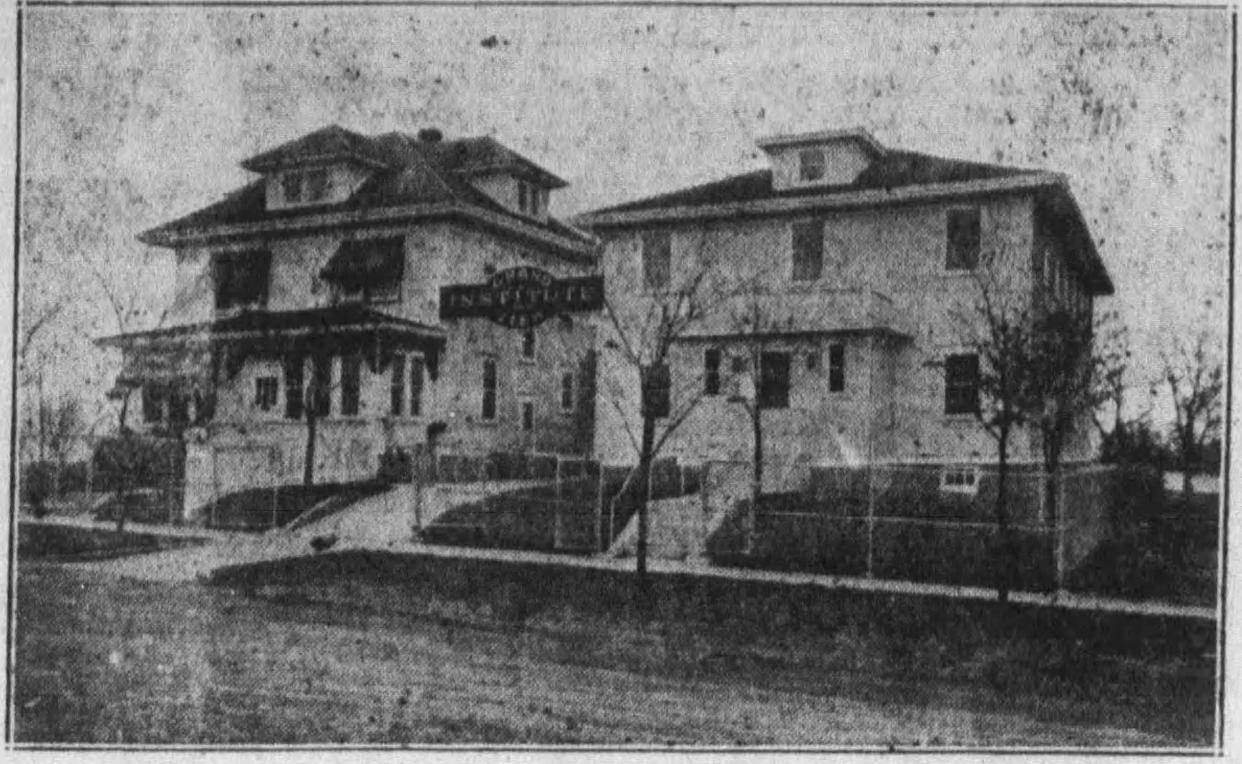Sioux Falls clinic once offered electrotherapy to handle ailments in the '20s: Looking back

St. Mary’s Hospital, which once conducted business at 828 W. Second St., provided treatments for a variety of medical issues, from sinus infections to eczema, and most ailments in between.
The establishment was founded in 1923 by Emil Roos, an immigrant from Switzerland who arrived in this country in 1914. When Roos opened his clinic, he called it Grand View Electronic Institute. Roos employed methods developed by Dr. Albert Abrams to diagnose and treat all manner of ailments. The methods employed were non-surgical and affordable, but not necessarily scientifically sound. Emil Roos lived in Oregon before moving to Sioux Falls in 1923. In the 1920 census, his occupation was listed as Electric Physician.
Dr. Albert Abrams, whose methods Roos employed, was a doctor from San Francisco who studied in Europe and taught medical students pathology at Cooper Medical College in San Francisco.
Up to a point, he was respected and trusted.
Abrams began inventing electrical contraptions he used to diagnose patients’ blood samples for diseases, and later, paternity. He left the American Medical Association on April 19, 1922, after his methods began to draw scrutiny from the medical establishment. He died two years later from an ailment his devices apparently failed to pick up. It is unclear where Roos came across his methods.
More:The brief and mystic stint of Madam Zueella the clairvoyant: Looking Back
Dr. Roos’ protege was John Ashoff Jr., a son of German immigrants, born in Randolph, Nebraska, on June 25, 1905. John’s father died of stomach cancer when he was 6 years old. This left his mother, Gertrude, with a farm to run and 11 children to raise. John was sent to live with family in Oregon, where he eventually crossed paths with Emil Roos. The Roos family; Emil, wife Ida, son Joseph, and a daughter named for her mother, took John in and helped to raise him. On the 1920 census he was listed as an adopted son, though this adoption was likely never made official.
Emil’s wife, Ida, died in 1920. She was buried in St. Mary’s Cemetery in Mt. Angel, Oregon. In 1923, Emil, his daughter, Ida, and John Ashoff moved to Sioux Falls, where Emil would set up his practice, and John could be closer to his mother, who had moved to Sioux Falls in 1919.
In 1927, Emil took ill. He suffered a stroke in February 1928, and died on March 30. Shortly after, John graduated from a college in Lima, Ohio. He took the reins at Grand View Institute and held them from that point on. Ida was there to help and carry on her father’s legacy.
On May 1, 1929, John Ashoff and Ida Roos were married by John’s brother, Father Francis Ashoff, in Monterey, Nebraska.
In 1932, the Grand View Institute changed its name to the Institute of Physical Therapy. It was deemed advisable to change the name “to more fully convey to the public that branch of science of healing in which it is engaged.” The name changed again in 1934 to St. Mary’s Clinic.
The clinic employed what it called electro, actino, thermo, and hydro therapies to relieve the symptoms of colds and sore throats, rashes, plantar warts, athlete’s foot, ear infections, acne, and even minor back injuries. Patients recall treatments involving a lighted wand or an electric zap.
To address other issues, the clinic utilized an electrified cage large enough to fit a person on a chair. There were water-based treatments that necessitated a 4-inch diameter connection to the city’s water supply. For chest colds and congestions, a cabinet lined with mirrors and light bulbs produced an “artificial fever” on the body, while the head remained cool outside the box.
More:Sioux Falls teacher was a finalist for NASA astronaut program: Looking Back
Former patients claimed the methods employed by St. Mary’s clinic worked for them, and some found no relief. Regardless, the treatments were always inexpensive, costing anywhere from $3 to $8 all the way through the 1970s, though sometimes multiple treatments would be required.
It is hard to say how St. Mary's was able to achieve these results. Was it the power of suggestion? Mind over matter, pushed along by glowing lights and electrical shocks? Who can say.
On Sept. 19, 1985, John Ashoff announced that St. Mary’s Clinic would close its doors on the 30th of that month. In 1987, plans were made to turn the building into a halfway house run by the Carroll Institute. In 1988, John and Ida sold the building to the Institute for $70.
John Ashoff died on Feb. 24, 1988. Ida followed on July 25, 2001. Both left a legacy of kindness and care spread over a long career, spanning decades. It’s hard to know how the treatments they employed achieved the results they did without a solid scientific foundation. The kindness they employed was perhaps enough to make the difference.
This article originally appeared on Sioux Falls Argus Leader: Sioux Falls clinic offered cheap electrotherapy through the 1970s

